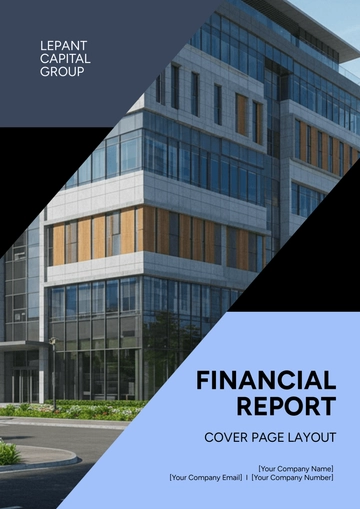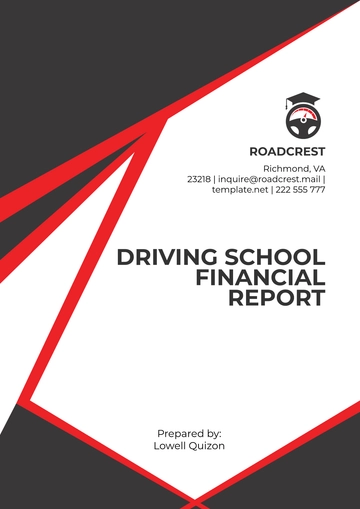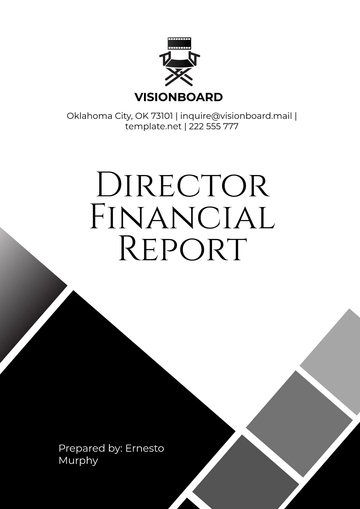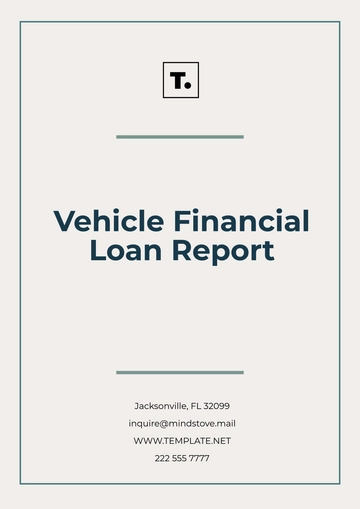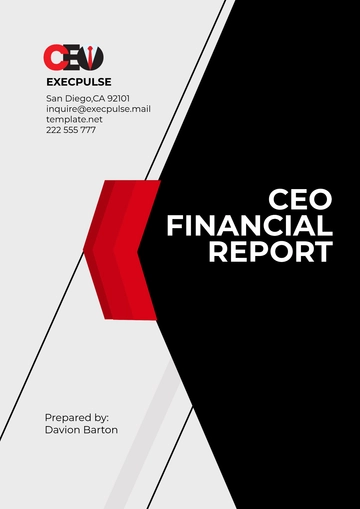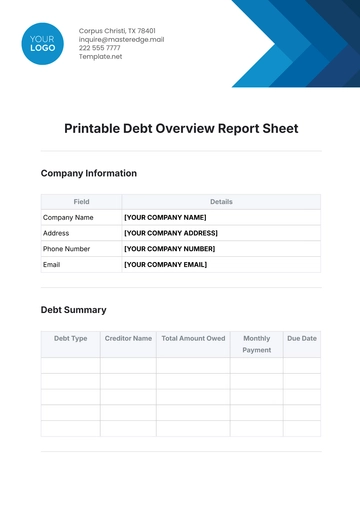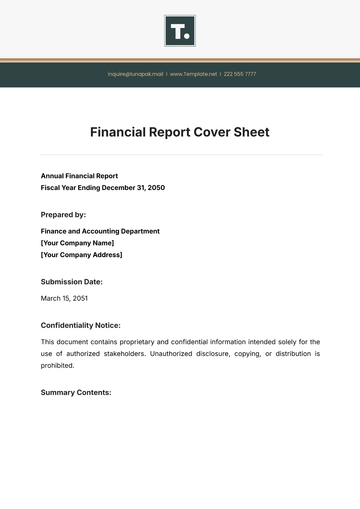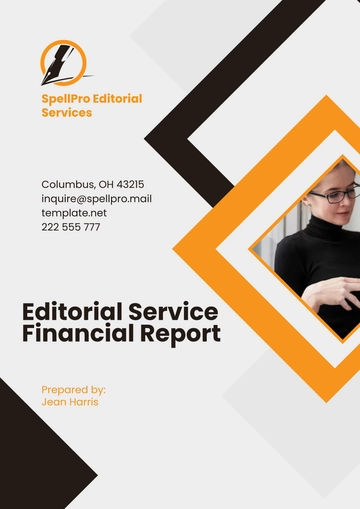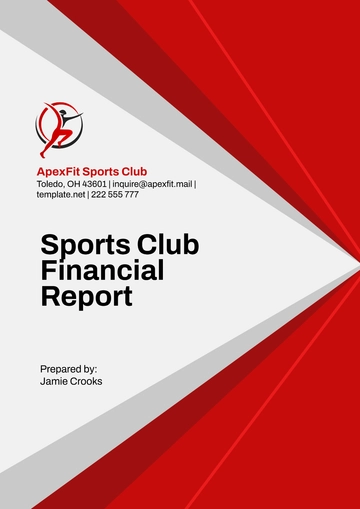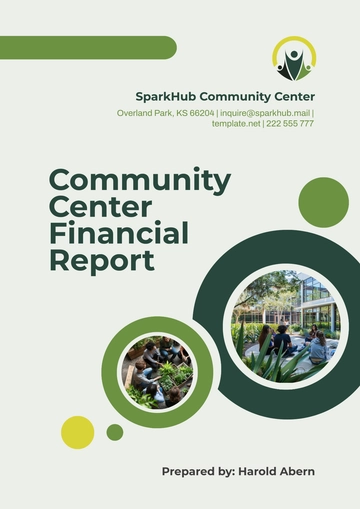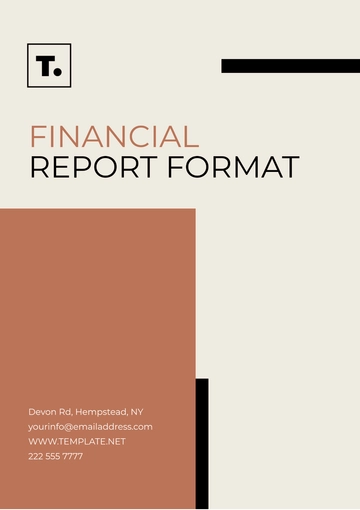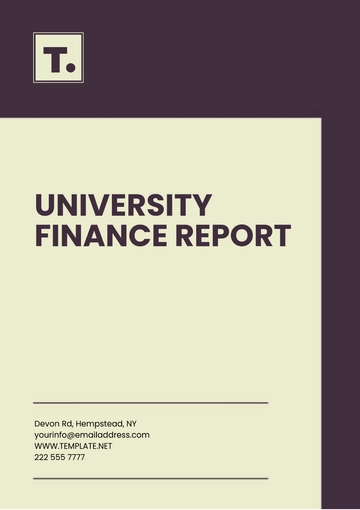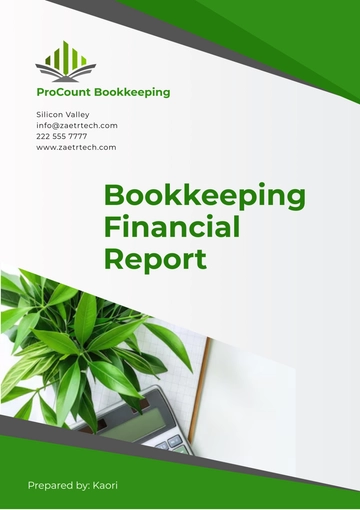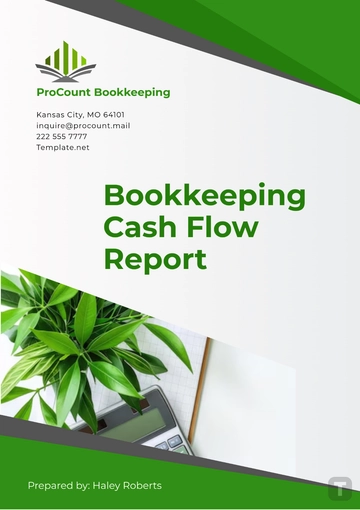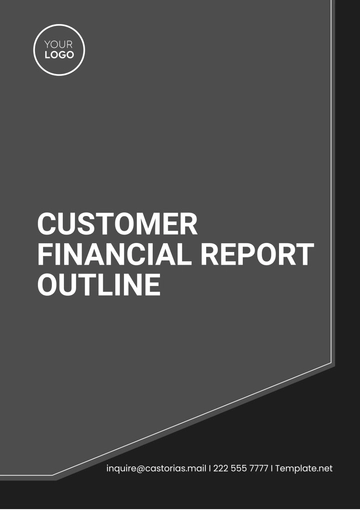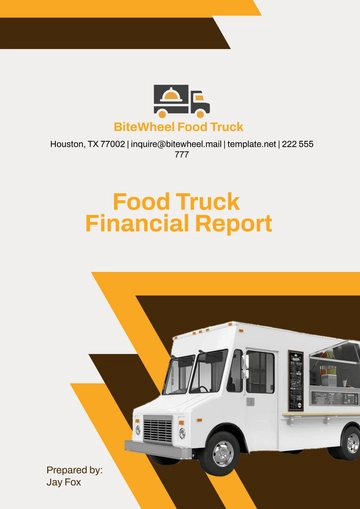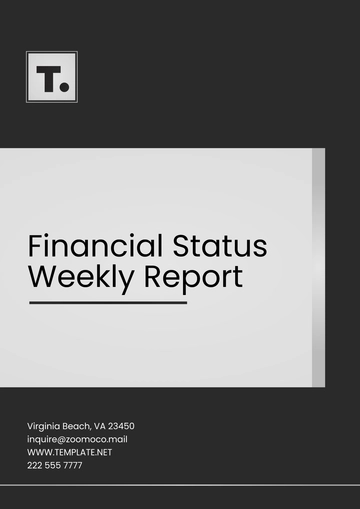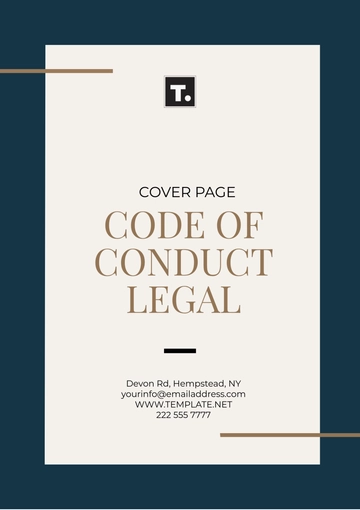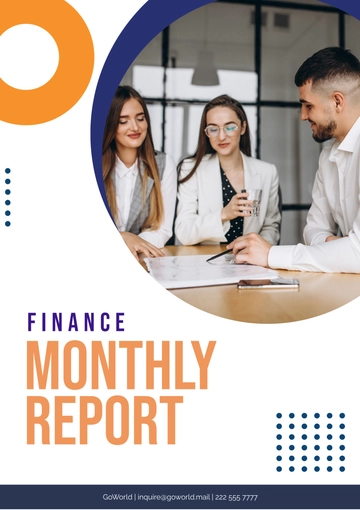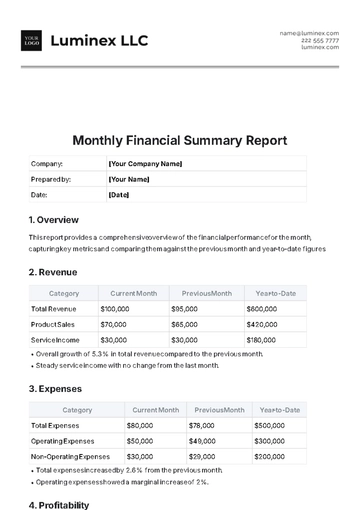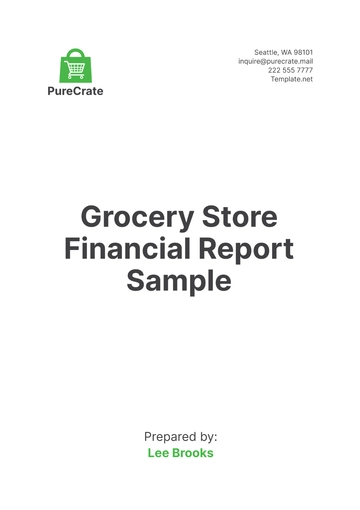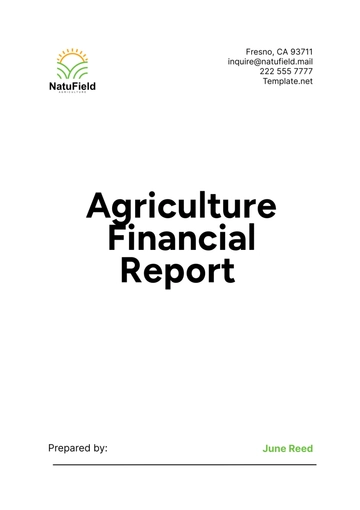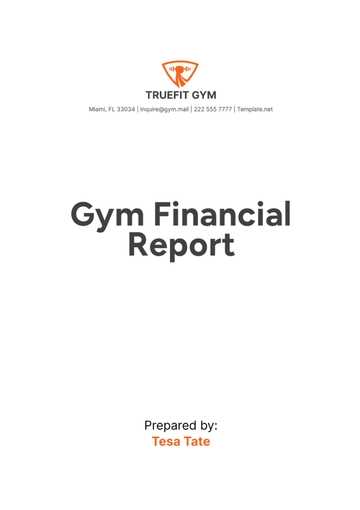Free Financial Transparency Report
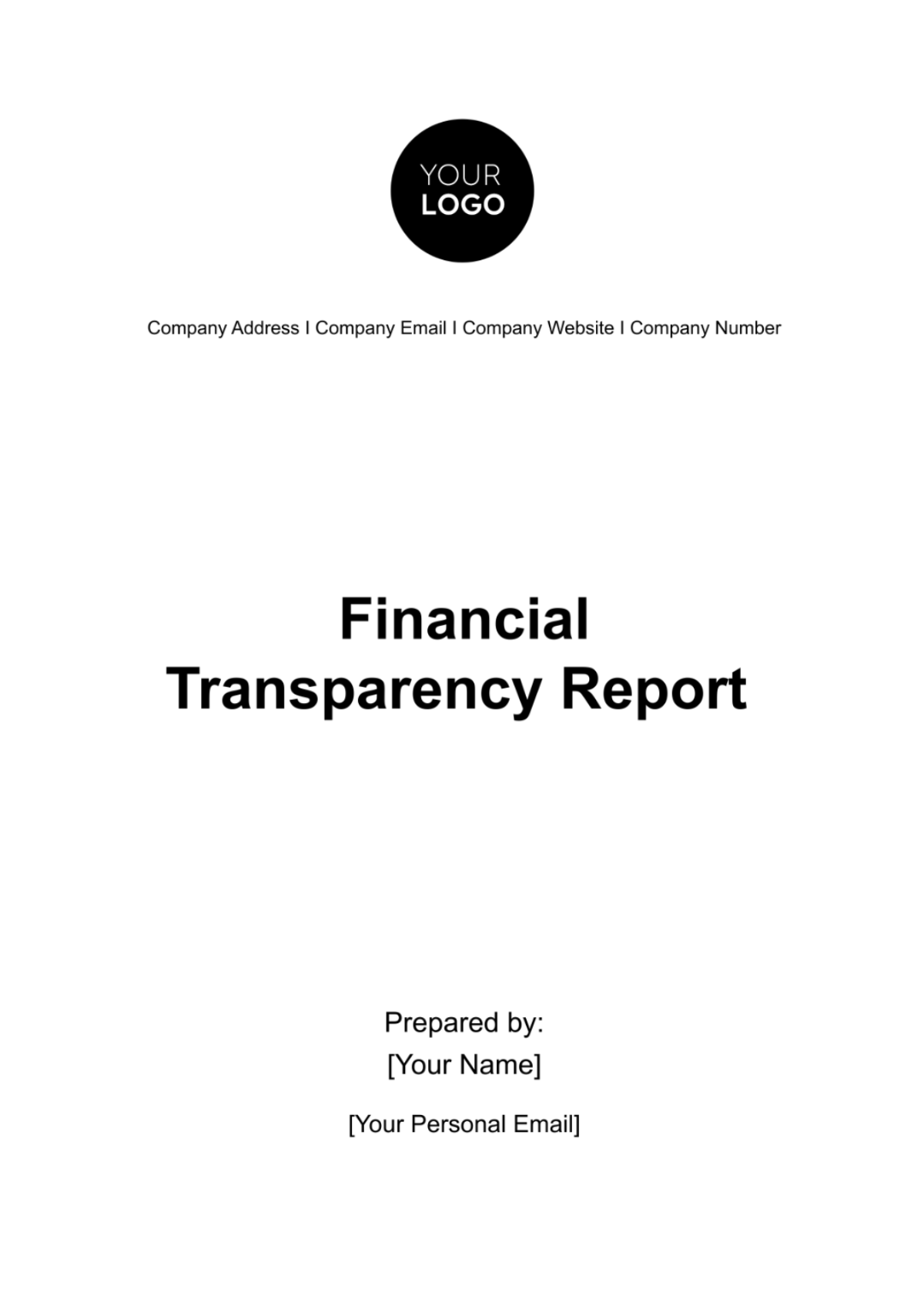
Executive Summary
The Financial Transparency Report for [Your Company Name] for the fiscal year 2050 aims to provide a comprehensive overview of our financial health and practices. During this period, the company has seen a robust growth in revenue, driven primarily by our innovative product line and expansion into new markets. Total revenue for the year stood at $14,000,000, marking an increase of 15% compared to the previous fiscal year. Our commitment to sustainable practices and ethical operations has also enhanced our brand reputation, contributing to this financial success.
Our strategic investments in technology and human resources have resulted in a significant increase in operational efficiency. However, these investments have also led to a temporary rise in our expenditure, totaling $9,000,000 for the year. Despite this, our net profit increased by 10%, a testament to the effectiveness of our financial strategies and operational management.
The report that follows provides a detailed analysis of our financial activities, compliance with regulatory requirements, risk management strategies, and future financial outlook. We believe that this transparency is crucial for maintaining the trust of our stakeholders and for the sustainable growth of [Your Company Name].
Financial Overview
Revenue and Expenditure
Revenue Breakdown
For the fiscal year 2050, [Your Company Name]'s revenue streams were diverse, with the majority coming from sales of our flagship products. The following table provides a detailed breakdown:
Revenue Source | Amount (USD) | Percentage of Total Revenue |
Product Sales | 9,500,000 | 68% |
Service Income | 3,000,000 | 21% |
Licensing | 1,000,000 | 7% |
Other Income | 500,000 | 4% |
Total Revenue: $14,000,000
Our strategic focus on market expansion and product diversification has contributed to this positive revenue growth. Product sales remain our strongest revenue source, benefiting from our investment in marketing and product development.
Expenditure Analysis
The company's expenditure for the fiscal year was primarily in the areas of research and development, marketing, and operational costs. The details are as follows:
Expenditure Category | Amount (USD) | Percentage of Total Expenditure |
Research & Development | 3,000,000 | 33% |
Marketing | 2,500,000 | 28% |
Operational Costs | 2,000,000 | 22% |
Employee Salaries | 1,500,000 | 17% |
Total Expenditure: $9,000,000
The significant investment in Research & Development is in line with our commitment to innovation and maintaining a competitive edge in the market. Marketing expenses were also ramped up to support our expansion into new markets and to build brand awareness.
Profit and Loss Statement
Our Profit and Loss statement reflects a healthy financial position for the fiscal year 2050. The detailed statement is as follows:
Item | Amount (USD) |
Total Revenue | 14,000,000 |
Total Expenditure | 9,000,000 |
Gross Profit | 5,000,000 |
Taxes | 1,000,000 |
Net Profit | 4,000,000 |
Our Net Profit for the year stands at $4,000,000, which is a clear indicator of our company’s robust financial health and effective management strategies.
Compliance and Governance
Regulatory Compliance
[Your Company Name] is committed to upholding the highest standards of financial compliance as per the regulatory requirements of each region in which we operate. In the fiscal year 2050, we have adhered to a comprehensive range of compliance measures, as detailed below:
Compliance with Financial Reporting Standards
International Financial Reporting Standards (IFRS): All financial statements of [Your Company Name] have been prepared in accordance with IFRS, ensuring transparency and comparability of our financial performance globally.
Local Tax Laws: We have complied with all local tax laws and regulations, ensuring timely and accurate tax filings in all regions. Our tax compliance rate for this fiscal year was 100%.
Anti-Money Laundering (AML) and Counter-Terrorism Financing (CTF)
We have implemented stringent AML and CTF policies and conducted regular employee training to prevent any unlawful financial activities.
Governance Structure
Our governance structure is designed to support ethical decision-making and accountability at all levels of the organization.
Board of Directors
Composition: The Board consists of 8 members, with a mix of internal and external directors, ensuring a balanced perspective in decision-making.
Roles and Responsibilities: The Board oversees the company’s strategic direction, financial practices, and ensures compliance with regulatory requirements.
Management Committees
Audit Committee: Responsible for overseeing financial reporting, internal controls, and audit processes.
Risk Management Committee: Focuses on identifying and mitigating financial risks.
Ethics and Compliance Committee: Ensures that all business operations adhere to legal and ethical standards.
Corporate Governance Policies
Code of Conduct: Outlines ethical standards and expectations for all employees.
Whistleblower Policy: Encourages reporting of any unethical or illegal activities without fear of retaliation.
Ethical Business Practices
[Your Company Name] is committed to maintaining the highest standards of integrity and ethics in all its business dealings.
Anti-Bribery and Corruption
A strict policy against bribery and corruption is enforced, with regular training provided to employees to recognize and avoid such practices.
Fair Business Practices
We adhere to fair competition laws and engage in ethical marketing and sales practices.
Risk Management
[Your Company Name]s risk management strategy is integral to our overall financial health and operational efficiency. Our approach involves identifying, assessing, and mitigating risks that could impact our financial performance or business objectives.
Risk Identification and Assessment
Key Risk Areas
Market Risk: This includes risks related to market volatility, currency fluctuations, and economic downturns.
Credit Risk: The risk of loss due to a customer's failure to meet contractual obligations.
Operational Risk: Risks arising from internal processes, systems, or external events affecting day-to-day operations.
Compliance Risk: The risk of legal or regulatory sanctions due to non-compliance with laws and regulations.
Risk Assessment Table
Risk Category | Potential Impact | Likelihood | Mitigation Strategies |
Market Risk | High | Medium | Diversification, hedging strategies |
Credit Risk | Medium | Low | Credit checks, diversified client base |
Operational Risk | Medium | Medium | Robust internal controls, regular audits |
Compliance Risk | High | Low | Continuous compliance training, legal reviews |
Risk Mitigation Strategies
Market Risk
Diversification: Spreading investments across various markets and sectors to reduce exposure.
Hedging Strategies: Utilizing financial instruments to offset potential losses caused by fluctuations in the market.
Credit Risk
Credit Checks: Conducting thorough credit assessments of customers before extending credit.
Diversified Client Base: Reducing dependency on any single customer or group of customers.
Operational Risk
Internal Controls: Implementing strict internal controls and standard operating procedures.
Regular Audits: Conducting regular internal and external audits to ensure operational integrity.
Compliance Risk
Continuous Training: Regular training programs for employees on compliance-related matters.
Legal Reviews: Regular reviews of operations by legal experts to ensure compliance with all applicable laws and regulations.
Monitoring and Review
Regular monitoring and review of the risk management strategies are carried out to ensure they remain effective and responsive to any changes in the risk landscape. This includes quarterly risk assessment reviews by the Risk Management Committee and annual audits by external auditors.
Investment and Funding
[Your Company Name]'s investment and funding strategy is a critical component of our financial health and growth trajectory. We balance our investment portfolio with a prudent approach to funding to ensure long-term sustainability and profitability.
Investment Portfolio
Overview
Our investment strategy focuses on diversification, risk management, and aligning with our long-term business goals. We invest in a mix of assets, including equities, bonds, real estate, and innovative startups.
Investment Breakdown
Investment Type | Amount Invested (USD) | Percentage of Portfolio | Expected ROI |
Equities | 2,000,000 | 40% | 8% |
Bonds | 1,500,000 | 30% | 5% |
Real Estate | 1,000,000 | 20% | 6% |
Startups | 500,000 | 10% | 12% |
Total Investment: $5,000,000
Our focus is on balancing high-return opportunities with stable, lower-risk investments to protect and grow our capital.
Funding Sources
Capital Structure
[Your Company Name] employs a balanced approach to funding, leveraging a mix of equity, debt, and internal cash reserves to finance our operations and growth initiatives.
Funding Breakdown
Funding Source | Amount (USD) | Terms/Conditions |
Equity | 4,000,000 | Shares issued at market price |
Debt | 3,000,000 | 5-year term at 4% interest |
Internal Reserves | 2,000,000 | - |
Total Funding: $9,000,000
This diverse funding approach allows us to maintain financial flexibility and leverage opportunities without overextending our liabilities.
Future Investment Plans
Looking forward, [Your Company Name] plans to continue exploring opportunities in emerging technologies and green energy sectors. We are also considering expanding our real estate investments, focusing on sustainable and environmentally friendly properties.
Funding Strategy Moving Forward
Our future funding strategy will focus on maintaining a healthy balance between equity and debt, while also exploring new funding avenues such as venture capital partnerships and government grants, especially for our green energy projects.
Sustainability and Social Responsibility
[Your Company Name] is deeply committed to integrating sustainability and social responsibility into all aspects of our business operations. Our approach focuses on environmental stewardship, social impact, and ethical governance.
Environmental Initiatives
Green Operations
Renewable Energy Usage: 50% of our energy needs are now met through renewable sources.
Waste Reduction: Implemented waste reduction programs resulting in a 30% decrease in waste generation.
Carbon Footprint Reduction
Goal: Reduce carbon emissions by 25% over the next five years.
Current Status: 10% reduction achieved this year through various initiatives.
Social Impact
Community Engagement
Programs: Educational workshops, local community development projects.
Investment: $500,000 invested in community projects this year.
Employee Wellbeing
Initiatives: Health and wellness programs, flexible work arrangements.
Results: Employee satisfaction score increased by 20% from the previous year.
Ethical Governance
Supplier Standards: Strict environmental and social standards for all suppliers.
Diversity and Inclusion: Aim to increase diversity in leadership roles to 40% within the next three years.
Sustainable Investment
Ethical Investing: 15% of our investment portfolio is in sustainable and socially responsible funds.
Future Financial Outlook
[Your Company Name] anticipates a strong financial performance in the upcoming years, underpinned by our strategic investments, robust risk management, and commitment to sustainability.
Revenue Growth Projection
2051: Projected revenue of $16,000,000, a 14% increase from 2050.
2053: Estimated revenue of $18,500,000, reflecting continued market expansion and product development.
Profit Expectations
Year | Projected Net Profit (USD) |
2051 | 4,800,000 |
2053 | 5,500,000 |
Investment in Innovation and Sustainability
2051-2053: Plan to invest $3,000,000 in sustainable technologies and green initiatives.
Market Expansion
New Markets: Targeting expansion into two new international markets by 2053.
Product Diversification: Introducing three new product lines focusing on eco-friendly materials.
Risk Management Focus
Continued emphasis on dynamic risk management strategies to navigate uncertain market conditions and global economic changes.
Long-Term Goals
Sustainability: Achieve a 50% reduction in carbon emissions by 2030.
Financial Health: Maintain a balanced portfolio, ensuring steady growth and shareholder value.
- 100% Customizable, free editor
- Access 1 Million+ Templates, photo’s & graphics
- Download or share as a template
- Click and replace photos, graphics, text, backgrounds
- Resize, crop, AI write & more
- Access advanced editor
Communicate your financial integrity with the Financial Transparency Report Template from Template.net. This editable, customizable template is designed for crafting detailed reports on financial transparency. Essential for building stakeholder trust, it covers financial activities, governance, and accountability, providing a clear view of financial operations and reinforcing your commitment to transparency.
You may also like
- Sales Report
- Daily Report
- Project Report
- Business Report
- Weekly Report
- Incident Report
- Annual Report
- Report Layout
- Report Design
- Progress Report
- Marketing Report
- Company Report
- Monthly Report
- Audit Report
- Status Report
- School Report
- Reports Hr
- Management Report
- Project Status Report
- Handover Report
- Health And Safety Report
- Restaurant Report
- Construction Report
- Research Report
- Evaluation Report
- Investigation Report
- Employee Report
- Advertising Report
- Weekly Status Report
- Project Management Report
- Finance Report
- Service Report
- Technical Report
- Meeting Report
- Quarterly Report
- Inspection Report
- Medical Report
- Test Report
- Summary Report
- Inventory Report
- Valuation Report
- Operations Report
- Payroll Report
- Training Report
- Job Report
- Case Report
- Performance Report
- Board Report
- Internal Audit Report
- Student Report
- Monthly Management Report
- Small Business Report
- Accident Report
- Call Center Report
- Activity Report
- IT and Software Report
- Internship Report
- Visit Report
- Product Report
- Book Report
- Property Report
- Recruitment Report
- University Report
- Event Report
- SEO Report
- Conference Report
- Narrative Report
- Nursing Home Report
- Preschool Report
- Call Report
- Customer Report
- Employee Incident Report
- Accomplishment Report
- Social Media Report
- Work From Home Report
- Security Report
- Damage Report
- Quality Report
- Internal Report
- Nurse Report
- Real Estate Report
- Hotel Report
- Equipment Report
- Credit Report
- Field Report
- Non Profit Report
- Maintenance Report
- News Report
- Survey Report
- Executive Report
- Law Firm Report
- Advertising Agency Report
- Interior Design Report
- Travel Agency Report
- Stock Report
- Salon Report
- Bug Report
- Workplace Report
- Action Report
- Investor Report
- Cleaning Services Report
- Consulting Report
- Freelancer Report
- Site Visit Report
- Trip Report
- Classroom Observation Report
- Vehicle Report
- Final Report
- Software Report
